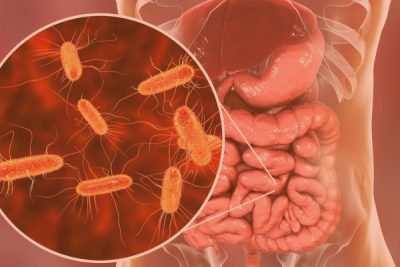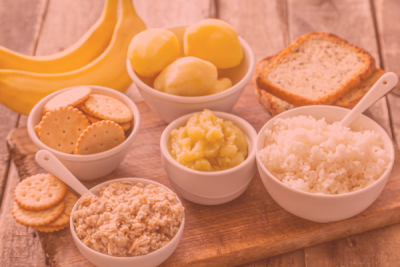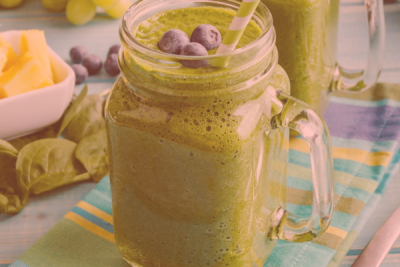Impact of high-oxalate foods on gut health
Plant foods such as leafy greens and legumes are popular among health-conscious individuals. However, many of these foods also contain a substance known as oxalate (oxalic acid). High levels of oxalate may reduce nutrient absorption.
Studies have also reported associations between oxalate consumption and autism development. It has also been reported that oxalates may worsen chronic, unexplained vaginal pain (vulvodynia).
What is oxalate?
Oxalic acid is an organic acid in plants, including vegetables, leafy greens, nuts, seeds, fruits, and cocoa. Plants use oxalates to protect themselves from infection or from being eaten.
Oxalate can be synthesized from your body or you may receive it via dietary intake. Vitamin C (ascorbic acid) can also be converted into oxalate when metabolized. Oxalate can bind to minerals to form compounds, including iron oxalate and calcium oxalate. This mostly takes place in the colon, but can also take occur in the kidneys and other parts of the urinary tract.
In most individuals, oxalate compounds are eliminated in the urine or stool. However, among sensitive individuals, high-oxalate foods have been associated with an elevated risk of health concerns such as kidney stones.
Oxalate consumption and the gut
- One of the main concerns regarding oxalate is that it can bind to minerals in the gut and prevent the body from absorbing the minerals. Therefore, eating fibrous foods with oxalate may reduce nutrient absorption. For example, spinach is high in oxalate and calcium, which prevents calcium absorption in the body.
- Oxalates have a high affinity for magnesium, calcium, and iron.
- Magnesium is a catalyst for various functions of the body that involve gut health and is essential for food digestion. Magnesium also helps push stool through the small intestines. Thus, a magnesium deficiency can lead to constipation and abdominal pain.
- Iron is used to produce hemoglobin and allows blood cells to carry oxygen throughout the system. It also promotes digestion and fights off bad bacteria in the gut.
- Calcium is essential for bone strength. Low calcium levels increase the risk of reduced bone density, osteoporosis, bone fractures, and weakening of teeth.
- Your gut determines oxalate absorption. Some of the oxalate consumed can be broken down by gut bacteria before it binds to minerals. A gut microbe, Oxalobacter formigenes, uses oxalate as an energy source, significantly decreasing the amounts of oxalates absorbed by the body.
- Oxalates, if not eliminated efficiently by gut microbes, may cause irritation and inflammation in the gut. Individuals with leaky gut, candidal infection, or SIBO (small intestinal bacterial overgrowth) are more sensitive to oxalates in foods and may have higher oxalate accumulation.
- Studies have reported that individuals with inflammatory bowel disease (IBD) are at an increased risk of developing kidney stones since IBD patients are unable to regulate the amount of oxalate absorption.
- Kidney stones can affect your muscles, joints, liver, thyroid, and eyes, and cause inflammation throughout the body.
- Likewise, increased oxalate levels have been reported in the urine of individuals with gastric bypass surgery and other surgeries that alter gut functions.
- Individuals who have consumed antibiotics or experienced gut dysfunction could benefit from low-oxalate diets.
High-Oxalate Foods
Oxalates are found in almost all plants, but some contain very high amounts while others have very little. High-oxalate foods (greater than 50 mg per serving) include the following:
- spinach- a half-cup of cooked spinach contains 755 milligrams.
- Soy products. One cup of soy milk or yogurt may have up to 336 milligrams per serving
- Beet: One cup contains 152 milligrams of oxalate.
- Almonds. One ounce of almonds, or about 22 nuts, contains 122 milligrams of oxalates.
- Dates (one date contains 24 milligrams)
- Raspberries (48 milligrams per cup)
- Sesame seeds
- Black beans
- cocoa powder
- carrots
- beetroot
- potatoes
- cashews
- peanuts
- Brussel sprouts
- buckwheat
- turnip greens
- okra
- celery
- rye
- navy greens
- star fruit
- Swiss chard
- Miso soup
- rhubarb
- endive
Tips to reduce oxalate intake
- Limit oxalate to 50 mg per day. Choose a variety of nutrient-dense animal and plant sources from this list of foods very low in oxalate. Foods low in oxalate include
- plain yogurt
- cheese
- canned fish with bones
- broccoli,
- bok choy
- kale
- walnuts and walnuts
- pumpkin and sunflower seeds
- blueberries, blackberries, and dried figs
- Boil/cook oxalate-rich vegetables. Boiling vegetables can reduce their oxalate content by 30-87%, depending on the vegetable. Individuals on an all-raw diet may have an increased chance of health issues caused by oxalates.
- Get enough calcium. Calcium binds to oxalate in the gut and decreases the amount your body absorbs, so aim for 800 to 1,200 mg of calcium daily.
- Drink plenty of water. Target a minimum of 2 litres daily to help your body flush out excess oxalates.
- Limit sugar and sodium intake, which may contribute to kidney stones at high levels.
- Get the recommended amount of vitamin C. High vitamin C intake might increase the amount of oxalates you excrete in your urine.
- Avoid taking antibiotics – Due to the association between a significant reduction of Oxalobacter formigenes and antibiotics, avoiding these medications could help your gut bacteria metabolize oxalates and your body absorb less.
- Drink green tea-If kidney stones are your concern, green tea is a good option. Studies have reported that green tea extract binds to calcium oxalate, alters the shape of the compound, reduced the amount of clumping, and inhibits large kidney stone formation.
- Heal your gut -Improving your gut health will decrease intestinal permeability, optimize the gut microbiota, and deter the body from oxalate absorption. lifestyle practices that promote a balanced and thriving microbiome include the following:
- Spend more time outdoors
- Regular exercise
- Getting adequate sleep
- Lowering stress levels
- Direct, skin-to-skin contact with nature
- Consuming whole foods high in indigestible plant fibre
Summary
Oxalate is an organic acid found in plants, but your body can also synthesize it. Too many oxalates can mess with digestion. Oxalates bind minerals, prevent their absorption, and have been linked to health problems such as kidney stones. Nutrient absorption is especially inhibited when combined with fibre. Therefore, oxalates are healthy foods that can wreck your gut!
However, many foods that contain oxalates are delicious, rich in fibre, antioxidants, and other nutrients, and provide many health benefits. Avoiding them is not necessary for most individuals and may even be detrimental.
Most healthy people can consume oxalate-rich foods without problems, but those with altered gut function may need to limit their intake. Diets with less than 50 mg of oxalate per day can be balanced and nutritious. Calcium also helps reduce oxalate absorption.
If you suffer from any of the following conditions, you may want to try scaling back your oxalate consumption to see if it influences your health positively.
- Leaky gut syndrome
- Kidney stones
- Inflammatory bowel disease (IBD)
- Irritable bowel syndrome (IBS)
- Small intestinal bacterial overgrowth (SIBO)
- Nutrient deficiency (could be due to malabsorption)
- Autoimmune diseases such as chronic fatigue syndrome
- Chronic inflammatory diseases
- Vulvodynia













